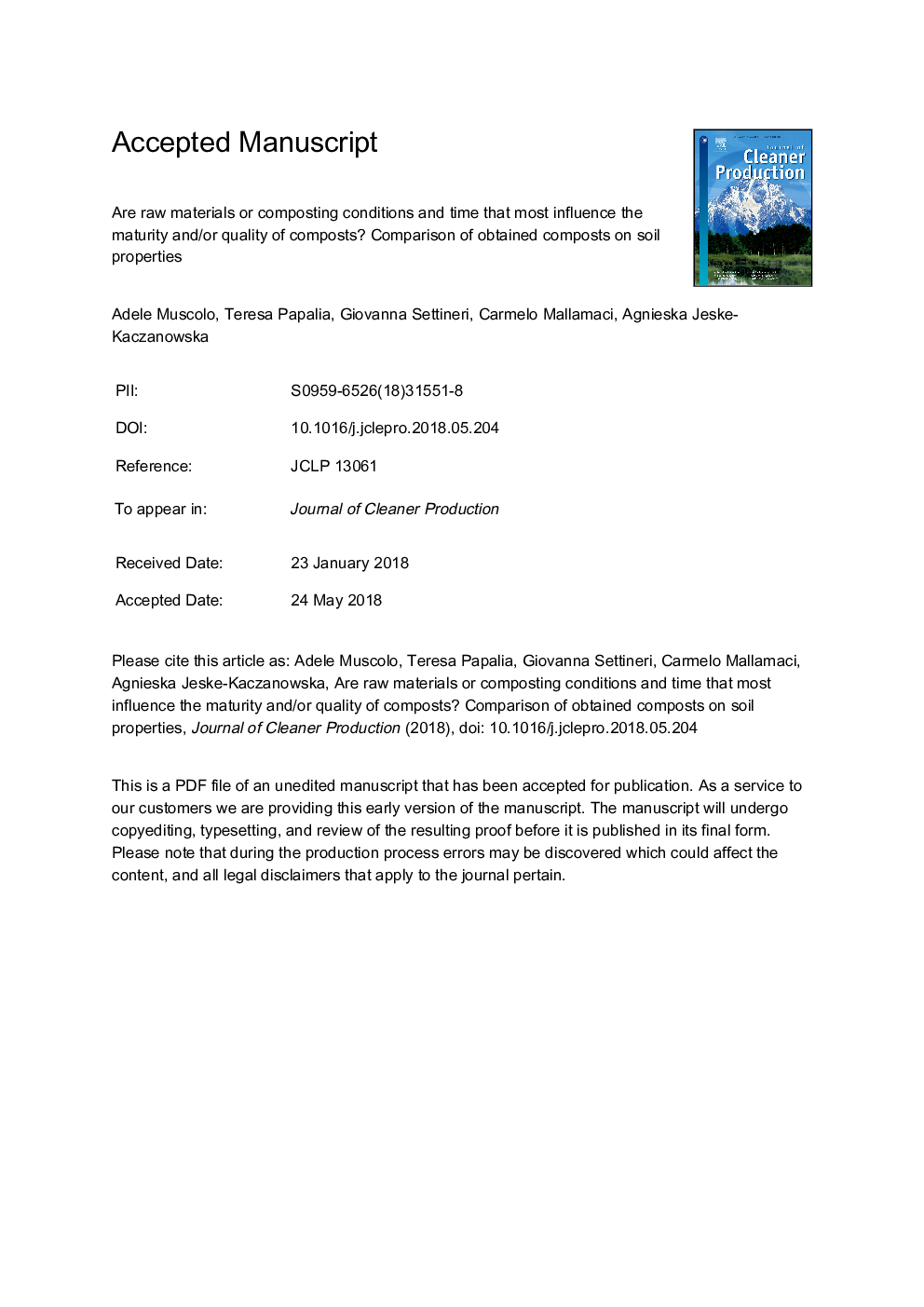| Article ID | Journal | Published Year | Pages | File Type |
|---|---|---|---|---|
| 8093884 | Journal of Cleaner Production | 2018 | 34 Pages |
Abstract
Waste composting is a process which is spreading worldwide to reduce waste disposal in landfill. The composting technical currents give little attention to the type and chemical composition of biomass that are mixed not considering that these can affect quality and maturity of the compost produced. In addition, during the composting process the amount of oxygen and temperature are generally only monitored but not set up. Our hypothesis is that composts, prepared from different organic wastes, can be chemically different with consequent different fertilizer properties. Stability and quality of composts are dependent on multivariate parameters such as raw material source, proportions used, composting procedure, and maturation time. Starting from this consideration a composting experiment was carried out to evaluate if were the raw materials (chemical composition, mixture and ratio), or the composting conditions and time, to influence the maturity or the quality of composts. We prepared four composts starting from different combinations and ratios of vegetable residues and/or olive pomace. After 120 days, the four composts were physically, chemically and biologically characterized to evaluate maturity degree, stability and quality of the products obtained under the same composting conditions and time. Their ability, as soil improver, was evaluated assessing soil chemical and biochemical properties 90 days after the compost addition. Here we show that the chemical composition of raw materials and the set up parameters of composting processes can have a different weight in influencing compost stability and quality. Our results evidenced that during the composting process all the composts had a similar percentage of C/N ratio reduction and all of them achieved an acceptable maturity degree. The composts produced by olive pomace showed the highest degree of maturity as demonstrated by T value and organic matter loss, both indices of compost stability. Conversely the composts coming from green vegetable residues were richest in nutrients and phenols and had the highest CSC all indices of better quality. In this work we identified two composts able to increase carbon stock, and water holding capacity parameters that positively influence soil structure, and two compost able to increase the amount of soil microbial biomass, their activity and soil biodiversity, improving soil biological fertility. These results highlighted that compost maturity doesn't mean compost quality, suggesting that compost maturity is mainly linked to composting setup parameters, while compost quality is mainly linked to chemical composition. FDA and DHA activities have been identified as markers for assessing the quality of amended soils.
Related Topics
Physical Sciences and Engineering
Energy
Renewable Energy, Sustainability and the Environment
Authors
Adele Muscolo, Teresa Papalia, Giovanna Settineri, Carmelo Mallamaci, Agnieska Jeske-Kaczanowska,
